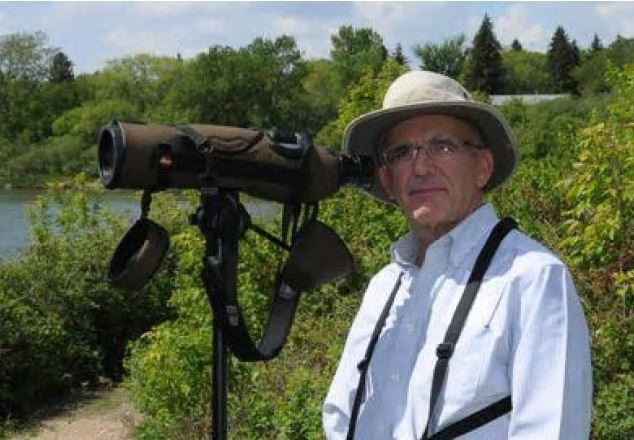
What is your favorite bird species?
The Whooping Crane is my favorite bird species for many reasons. This magnificent white bird with a red crown and black flight feathers is the tallest bird in North America. Although still an endangered species, it is a wildlife conservation success story. Its Canadian wild population has made a remarkable comeback from only 15 birds in 1941 to over 500 individuals in the wild today. I am lucky to be located in Saskatoon near the best location in North America to view these birds during fall migration. During late September and October, I guide birders to view and photograph these beautiful birds and tell them stories about their recovery from near extinction. We have found up to 180 individuals with the highest numbers in late October.
Whooping Crane (photo: Boyd Coburn)
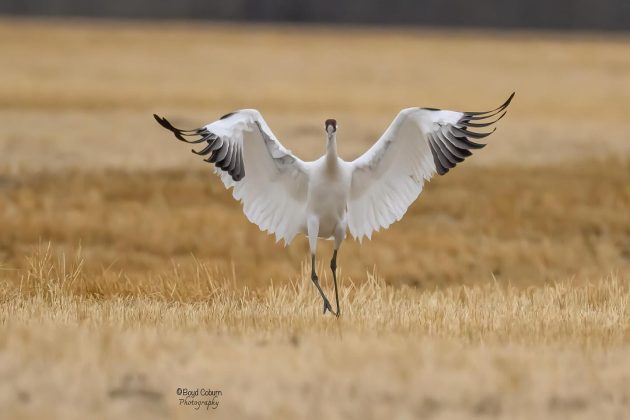
What is your name, and where do you live?
My name is Stan Shadick and I live in the city of Saskatoon, Saskatchewan, Canada.
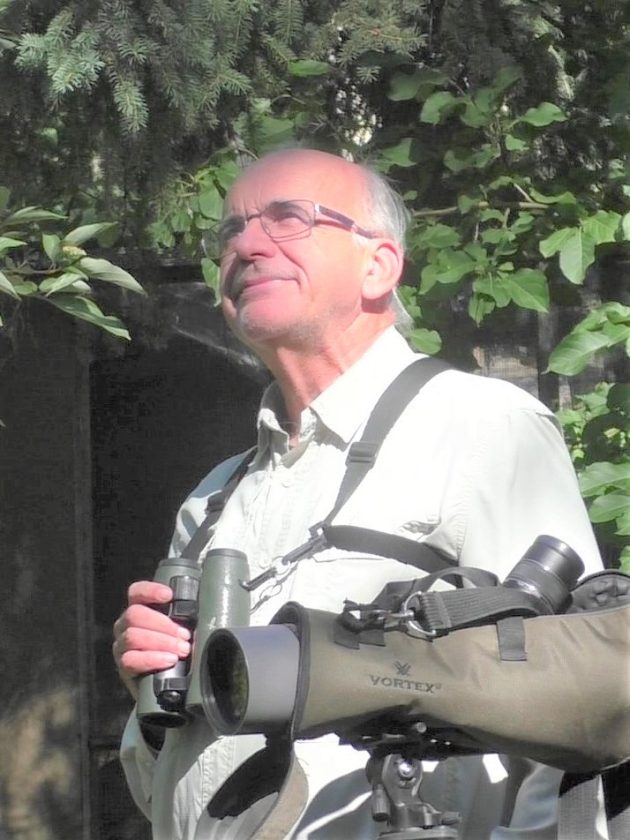
What are the main regions or locations you cover as a bird guide?
I guide visiting birders and bird photographers to over 40 different birding hotspots throughout the province of Saskatchewan. Because we are located in the center of Canada, Saskatchewan attracts birds from both eastern and western North America.
Some of our best birding locations include:
- Grasslands National Park (prairie birds)
- Prince Albert National Park (Boreal Forest birds)
- Cypress Hills Park (subalpine birds)
- Last Mountain Lake Bird Sanctuary (oldest federal sanctuary in North America)
- Great Sandhills (prairie birds)
- Duck Mountain Park (eastern warblers)
- Meadow Lake Park (Western Tanager and rare Northern Pygmy Owl)
- Souris River (Lazuli Bunting, Yellow-breasted Chat, Eastern Wood Pewee, Field Sparrow, Yellow-throated Vireo)
- Reed Lake (Piping Plover, Black-necked Stilt, White-faced Ibis, Red Knot, White-rumped Sandpiper, American Avocet)
- Saskatoon region (Whooping Cranes, Sandhill Cranes, American White Pelican, Ross’s Goose, Cackling Goose, Mountain Bluebird, Wilson’s Phalarope, Marbled Godwit, Sharp-tailed Grouse courtship displays in April)
American Avocet (photo: Nick Saunders)
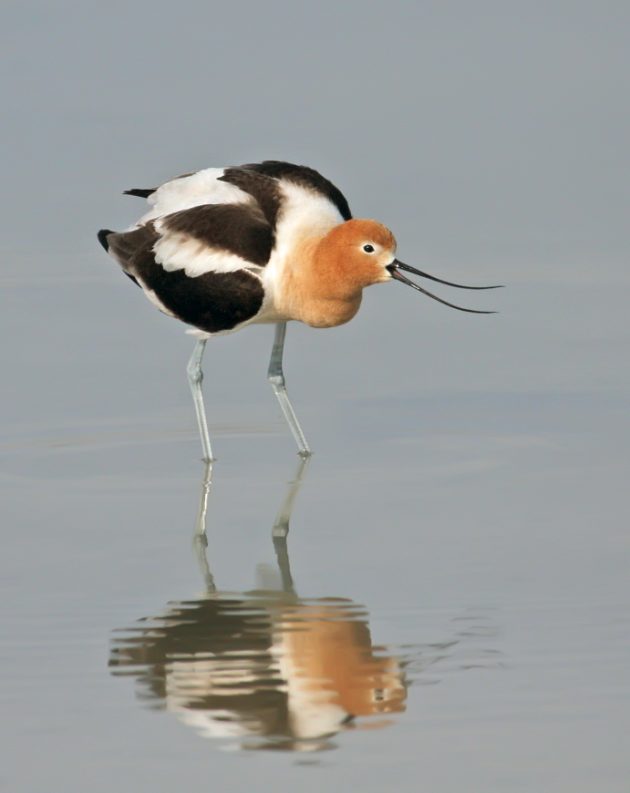
How long have you been a bird guide?
I have volunteered as a bird guide for over 50 years.
How did you get into bird guiding?
I became involved with various wildlife conservation organizations and recognized the need to help visiting birders find the best hotspots. I also recognize that by being a bird guide, I help governments recognize the economic reasons for preservation of natural habitat.
Mountain Bluebird (photo: Nick Saunders)
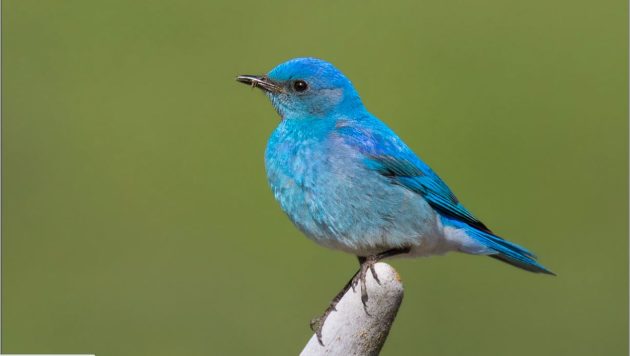
What are the aspects of being a bird guide that you like best?
I enjoy talking to my clients and helping them find and identify the best birds of Canada.
Black-necked Stilt (photo: May Haga)
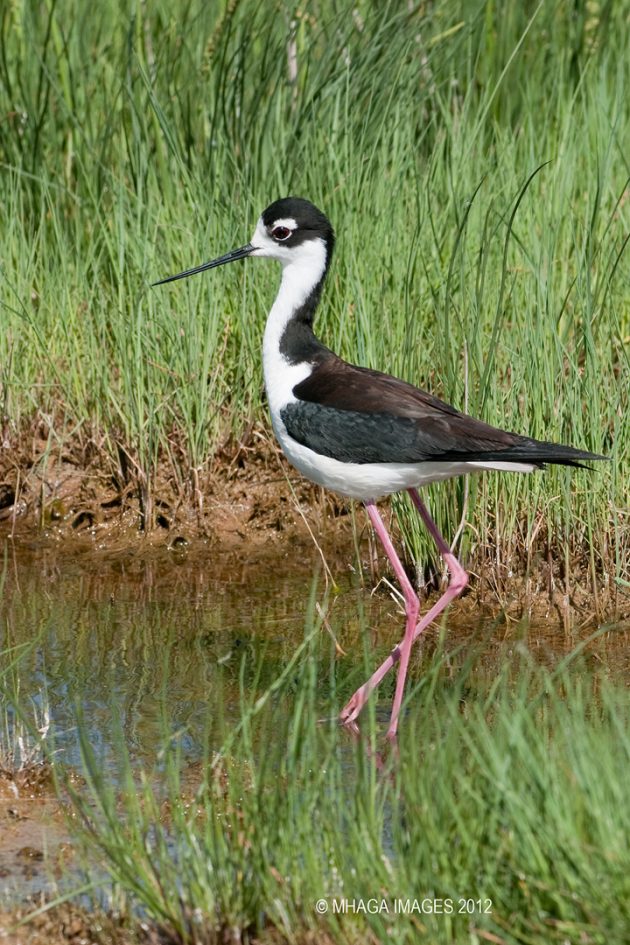
Which aspects do you dislike most?
It is difficult to let birders know about the exciting birding hotspots in Saskatchewan.
Northern Hawk-Owl (photo: Mark Langner)
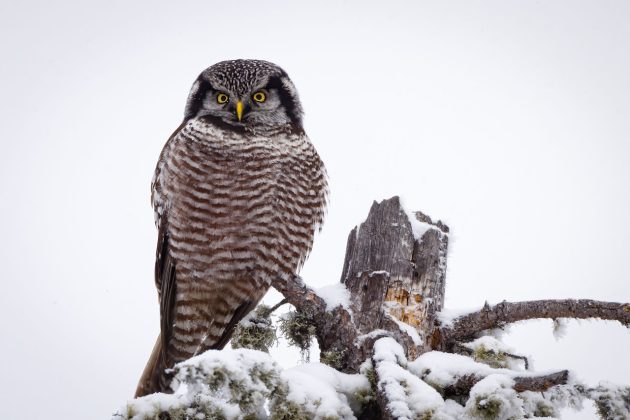
What are the top 5-10 birds in your region that you think are the most interesting for visiting birders?
- Whooping Crane: This tallest North American bird is most easily found during fall migration on day trips from Saskatoon. We take special measures to avoid disturbing these endangered birds while we watch and photograph them. Late September and October are the best times to see them. Their brief stopover locations are not predictable during spring migration.
- American White Pelican: This impressive white bird with black wings has the widest wingspan of any bird in Canada. It is most easily observed up close during half-day Blackstrap Lake bird tours.
- Sharp-tailed Grouse: The males of this species perform the most elaborate courtship dance of any North American bird in spring. They raise their white tails, outstretch their wings, expose 2 purple breast patches, and stomp their feet so rapidly it sounds like a machine gun. These birds are best seen on sunrise tours in April and early May to a private pasture very close to Saskatoon.
- Snowy Owl: The highest density of wintering Snowy Owls in the world are found in open fields in southern Saskatchewan. The best time to visit is from December through February. I provide tips for obtaining the best images with your telephoto lens on your camera.
- Sprague’s Pipit: This declining prairie bird sings in the sky above grasslands near Saskatoon and farther south. Best found from May to July.
- Baird’s Sparrow: This declining prairie sparrow is best found by identifying its beautiful song. Best found from late May to early July.
- Burrowing Owl: We offer a special photography tour to a private pasture where this bird can be photographed up close from a blind without disturbing the birds.
- Thick-billed Longspur: This declining prairie bird is now only found in a few scattered locations in southern Canada.
- Piping Plover: We offer day trips to observe this rare species at Chaplin, Reed, and Diefenbaker Lakes.
- Golden-winged Warbler: We offer multiday tours to the Pasquia Hills, where this rare eastern warbler has been reported.
Baird’s Sparrow (photo: Nick Saunders)
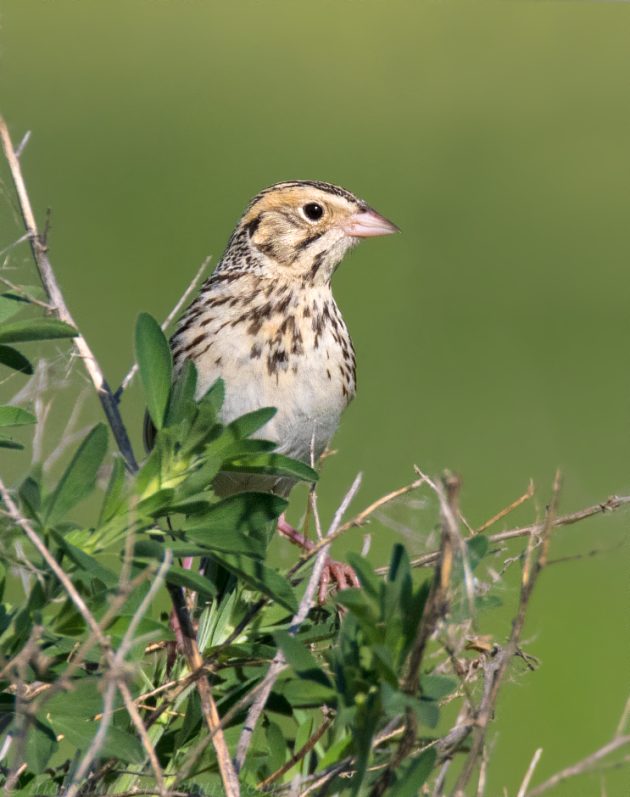
Can you outline at least one typical birdwatching trip in your area? Please briefly describe the locations, the key birds, and the approximate duration of such a trip
Gardiner Dam – Anerley Lakes Birding Tour Itinerary (Times are approximate). Join us for this leisurely driving tour. Great for a family outing.
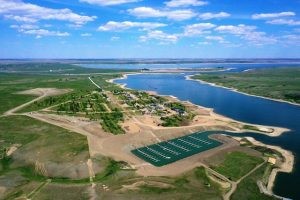
- 8:00 AM Saskatoon participants may meet the leader near the small grain elevator at the Western Development Museum parking lot off Lorne Avenue. We will drive about 110 km south of Saskatoon on Highway 219 to reach Gardiner Dam, Sandy Shores Resort Marina near Gardiner Dam
- 9:30 AM Tour begins at Sandy Shores Resort marina, located near the Coteau Bay boat launch west of Gardiner Dam. We will start with a short walk to look for birds on the South Shores Resort property at Gardiner Dam and then drive to view a nearby Great Blue Heron colony. Your leader will set up a high-magnification spotting scope so that we can view the herons from a distance without disturbing them.
- 10:45 AM We will drive to Coldwell Regional Park and walk along the park roads and trails through this wooded park, looking for a variety of songbirds. Some of the birds we might find include Mourning Dove, Great Horned Owl, Downy Woodpecker, Hairy Woodpecker, Northern Flicker, Least Flycatcher, Eastern Kingbird, Warbling Vireo, Red-eyed Vireo, Black-capped Chickadee, Barn Swallow, House Wren, Gray Catbird, Brown Thrasher, Mountain Bluebird, Veery, Cedar Waxwing, American Goldfinch, Clay-colored Sparrow, Spotted Towhee and Yellow Warbler.
- 12:00 Noon Enjoy your picnic lunch in the park or return to Sandy Shores Marina at Gardiner Dam to buy lunch.
- 1:00 PM Meet at the Gardiner Dam Interpretive Centre parking lot. Here, we will walk along the beach looking for the rare Piping Plovers plus Western Grebe, Killdeer, Willet, Franklin’s Gull, Common Loon, and other gulls and ducks. In the spruce trees near the center, we may find Merlin, Brown Thrasher, and Western Kingbirds.
- 1:45 PM Drive a short distance below the dam to the Gardiner Dam outflow. Here, we often find Osprey, American White Pelicans, Double-crested Cormorants, Western Meadowlarks, Cliff Swallows, Common Mergansers, plus many other ducks.
- 2:15 PM Our final visit will be to the Anerley Lakes Valley, where we hope to find some prairie birds, marsh birds, and shorebirds. We might find Long-billed Curlews in this area.
- 4:00 PM The tour ends at Anerley Lakes. You may return home on your own. Join us for this leisurely driving tour. Great for a family outing.
Red Knot (Photo: May Haga)
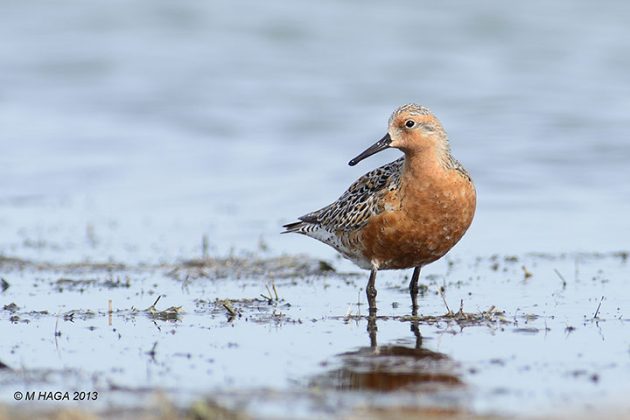
What other suggestions can you give to birders interested in your area?
Visiting birders should plan to rent a vehicle at the Saskatoon airport or from other locations in Saskatoon. Plan to dress for the weather. Bring a sun hat, rain jacket, and hiking boots in the summer. Bring binoculars (image-stabilized binoculars by Kite Optics are much superior to standard binoculars). Your guide will provide a spotting scope.
If you plan to photograph Snowy, Great Gray, or Northern Hawk Owls during winter, plan to wear multiple layers of clothing, including winter parka, sweater, heavy shirt, long underwear, winter gloves, winter hat, and attempt to rent a vehicle equipped with snow tires.
Snowy Owl (photo: Boyd Coburn)
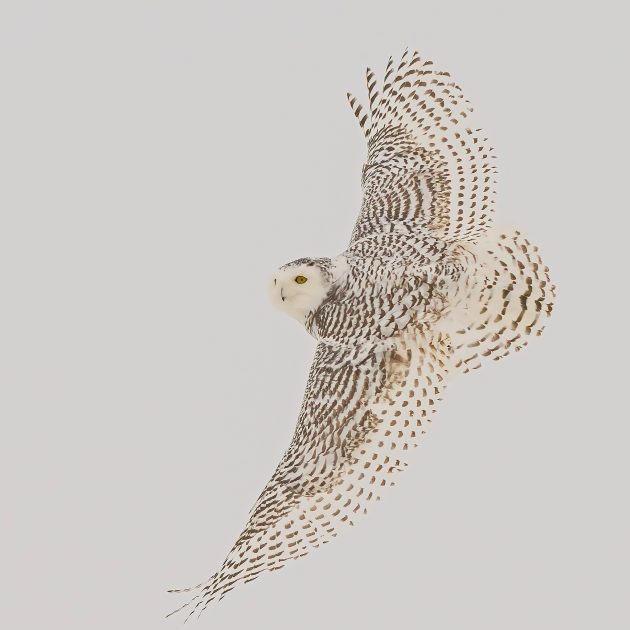
The best months to view birds in Saskatchewan:
- Breeding prairie birds are best observed from late May to mid-July.
- Migrating shorebirds are best viewed from mid to late May in spring and from mid-July through late August.
- Migrating warblers in the Saskatoon region are best seen from late August through mid-September.
- Whooping Cranes, Sandhill Cranes, Tundra Swans, Snow, Ross’s, Greater White-fronted, and Cackling Geese are best observed in September and October
- Sharp-tailed Grouse courtship displays are best photographed in late April and early May.
Sharp-tailed Grouse (photo: Paul Nicholas)
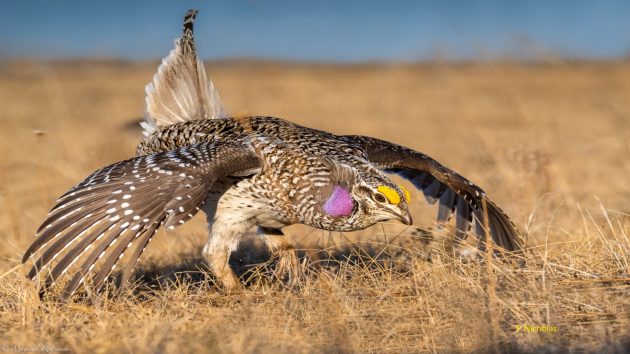
If any readers of 10,000 Birds are interested in birding with you, how can they best contact you?
- Internet: www.birdtours.ca
- Email: birdtours@sasktel.net
Is there anything else you would like to share with the readers of 10,000 Birds?
If you wish help in planning a personal birding trip to Saskatchewan without a guide, I also offer a Saskatchewan Birding Tips Service to help visiting birders plan the best locations to visit on their own during spring and summer.
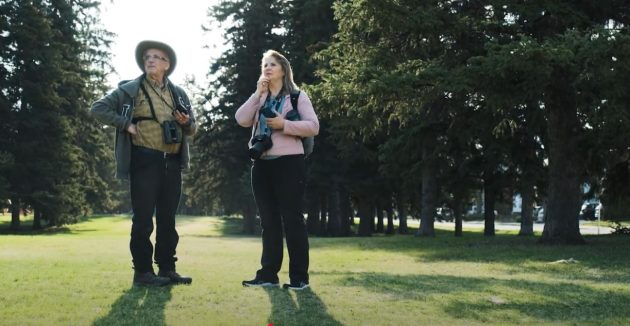


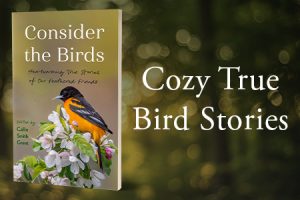

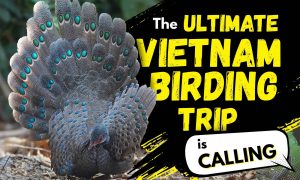
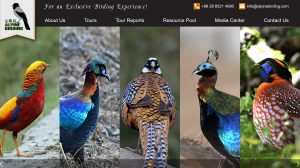
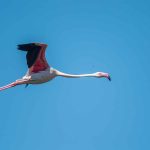
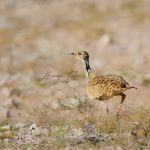
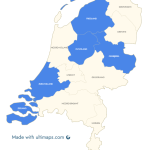
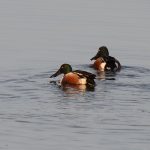

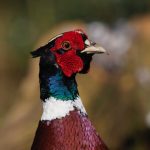
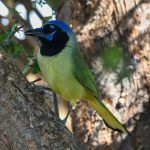
Leave a Comment